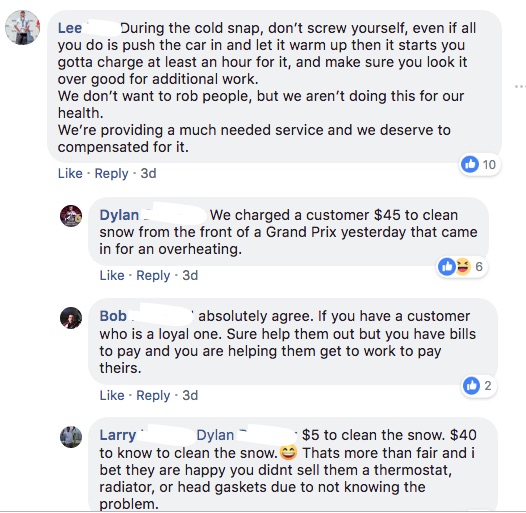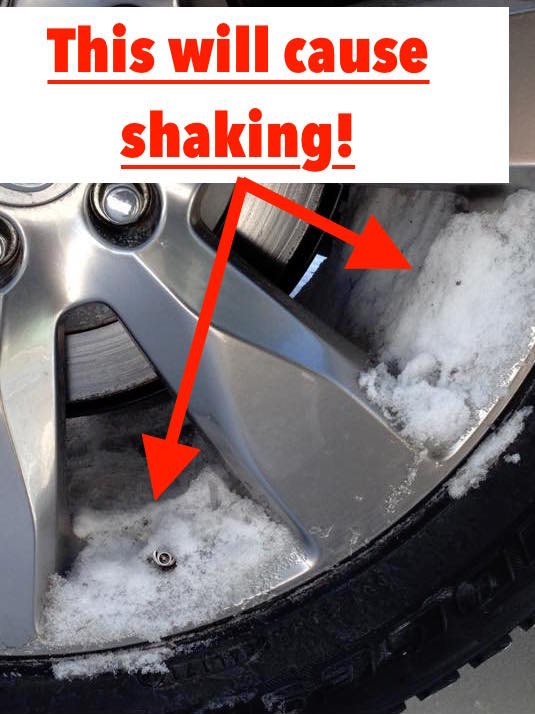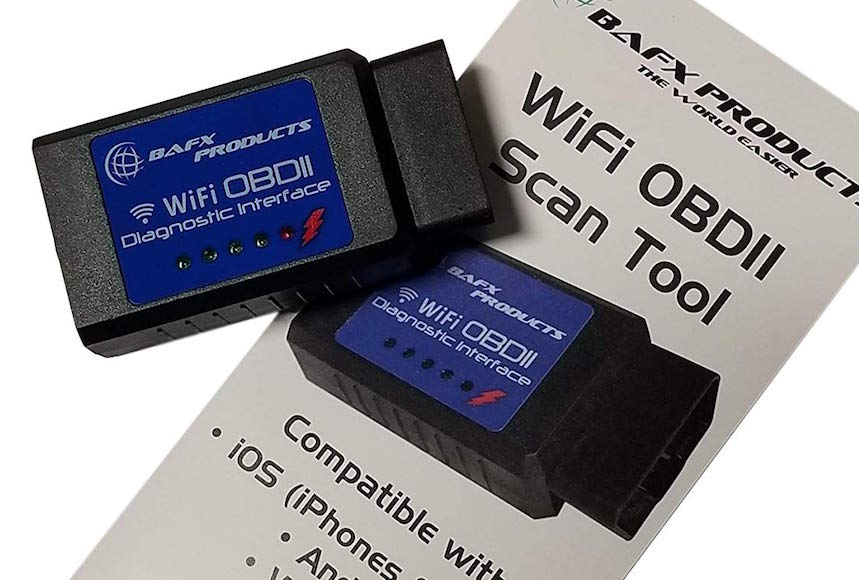If you live in an area that has been hit recently by so-called “cold snap” weather than you may be wondering if you should change your habits regarding starting or warming up your car in the extreme cold. You are right to be cautious as extremely cold weather can cause all sorts of weird problems with cars including dead batteries, gelling diesel fuel, and new leaks.
The best way to start your car in extremely cold weather is to avoid doing it. Try to drive as little as possible during these extremely cold weather events. It is dangerous to be on the roads. But everyone has emergencies or work that isn’t flexible, so here are some tips on how to start your car safely in extremely cold weather (0 degrees Fahrenheit and below).
If you are going to be starting your car in extremely cold weather first start by turning off all accessories before you attempt to start your car including radio, interior lights, and any A/C or fans. You want the battery to have the most power available in order to crank your car’s engine over.
Second, start the car normally and let it warm up for a bit longer than you normally would. While it is warming up keep the radio off and listen for any weird noises you haven’t heard before. Look at the dash on your car and make sure there are no new “check engine lights” or other warning lights illuminated.
Lastly, get out of the car and check the rims for ice on the inside and remove any build up of ice between the tire and the body of the car. In order to help the car warm up faster, you can hold your foot on the gas and hold the RPMs above idle– for example, around 1,000 RPMs or 1,500. If everything checks out okay, then begin driving slowly and make sure everything works properly (brakes, power steering, heater, etc).
If you notice any weird noises or vibrations, double check that there is no ice on your rims or suspension parts, and if the car still drives weird go to a mechanic ASAP. Extremely cold weather can cause all kinds of hard starting problems, weird check engine lights, and tire pressure monitoring systems to come on.
Table of Contents
Before Starting In Extreme Cold Checklist:
- Knock on the hood of the car (animals will oftentimes seek shelter under the hood of a car in the extreme cold)
- Turn off all accessories (radio, lights, fans)
- Use a thinner (winter) oil designed for your car. Check the owners manual.
- Start cranking the car over if it is slow to crank or only clicks– try a jump start.
- Once the car is started– let it warm up to normal operating temperature before driving.
- Check tires and rims for ice build up.
- Check dash for any “check engine lights” or other warning lights that may be on due to the extreme cold.
- If you see any check engine lights make sure to read them with a code reader before driving.
- Drive slowly and always check rims for ice build up or snow packing between the tires and the car body.
- Make sure to take your car to a mechanic before the “cold snap” begins and ask them to winterize your vehicle for you.
- If your car does have a block heater, make sure to plug it in overnight during extremely cold weather.
Extreme Cold & Your Car Battery:
The main component of your car that is hit by intense cold the hardest is the battery. You may think your mechanic is trying to upsell you on a new battery before winter, but they are more than likely just trying to watch out for you. If they tested your battery with an accurate CCA battery tester, and your battery shows it isn’t performing up to the CCA amps specified by your car, then the batteries weakness will likely become a problem during extremely cold weather.
You may have heard the old trick of keeping batteries in the refrigerator in order to store them longer. Whether that is true or not, I am not sure. But that tail comes from the fact that the colder a battery is the slower chemical reactions inside the battery take place. Meaning cold batteries = less available power.
During extremely cold weather the battery of your car is unable to create the chemical reaction inside itself as fast as it can during normal weather (say 68 degrees Fahrenheit vs. -40 degrees Fahrenheit). A new, strong battery, won’t typically have any problems. A weak old battery will likely struggle to start your car or may leave you stranded entirely.
Batteries really don’t like extreme anything. The best way to protect your battery is to keep it fully charged on a trickle charger and to park your car inside or to insulate the engine bay and keep the battery from reaching extremely cold temperatures. This will help ensure you get the maximum life from your car battery even in extremely cold weather.
Is there anything you should do to prepare your battery for the extreme cold?
- Park your car indoors if possible.
- Use a smart trickle charger (tons of options on Amazon)
to keep the battery fully charged.
- Check and clean your battery connections.
- Avoid short drives. Allow your car at least 10 minutes of driving to recharge your battery.
- Use an engine electric blanket
if parking outside.
- Test your battery with a CCA battery tester
before winter comes and replace if necessary.
Related Questions:
What if my car doesn’t start in the extreme cold? Check your connections and make sure the battery has no corrosion. Use a voltmeter to check the resting voltage, or get a jump start from someone and see if that has your car start. If you can’t get your car started while jump starting it and hearing the car crank over, it may be time to call a mechanic and have a further diagnosis done. The extreme cold will mean that the battery of your car cannot output power as efficiently or as much, and any weakness in your battery will come out during super cold weather.
Will My Antifreeze Freeze?:
It is called antifreeze for a reason. And while many mechanics say they haven’t heard of customers cars coming in with freezing antifreeze, you need to make sure your antifreeze is properly mixed. The more water mixed in with antifreeze, the less resistant to freezing it is. However, you should never exceed a 70/30 mix of antifreeze to distilled water. Always follow the guidelines on the Antifreeze bottle to see what ratio you should be mixing it.
Antifreeze or coolant in cars is designed specifically for the reason on preventing icing in the engine during extreme cold. But many antifreeze bottles say that at a 50/50 diluted mix (common mix) that the antifreeze is only good until temperatures of -32 Fahrenheit.
However, many mechanics report having never seen properly mixed coolant freeze regardless of the temperature out. That being said, many mechanics have seen problems with people diluting their antifreeze way beyond the 50/50 recommended amount and ending up with frozen heater cores or lines.
If you have been adding tons of water or don’t remember the last time you actually added antifreeze (just been topping it up with distilled water?) then you may have a problem. The only safe way to get the antifreeze to unfreeze is by bringing the car inside and running a heater in the same room (or directing it to blow on the cars engine bay).
Do not start the car if you think the antifreeze may be frozen. It may burst lines or cause further problems.
Here is a video where ChrisFix explains further and tests out antifreeze. Just note that he is only testing the antifreeze to around 5 degrees Fahrenheit.
All About Tires & Extreme Cold Weather:
A lot of people end up showing up at shops because their TPMS (Tire Pressure Monitoring System) light comes on during extremely cold weather. If your TPMS light came on during a cold spell it is likely because the tire pressures in the tire fluctuate with the cold weather.
When it is colder tire pressures drop, as the tire warms up the air expands and the pressure increases. Before taking your car to the last mechanic working on it and trying to blame them, go out and check the tire pressures yourself. And if they aren’t SUPER low then drive the car and let the tires warm up and then check the pressures again.
Or as you may find out the TPMS light may just go out on its own as the tire pressures come up to the normal specification again.
Watch out for in the extreme cold is a build up of ice on the inside of your rims. Just like mud on rims, which can cause steering wheel shaking, ice can cause similar problems. Most mechanics see this on a daily basis in cold weather and will likely still charge you to fix it (their time is very valuable). When really all you need to do is check it yourself and use some hot water and stick to remove the ice.
Here is what it looks like and if you see any ice like this– please remove it before driving!
Related Questions:
Should I change my oil to a thinner weight oil?
Yes, if you have a good mechanic they will have already done this on your car. But if you do your own oil changes, or don’t have a good mechanic, then be sure to change your oil to the winter specifications found in the owner’s guidebook. For example, you may run 10W-40 during summertime, but the manual may call for 0w-40 for winter time. When talking about oil the “W” is commonly misunderstood to refer to “weight” but it actually refers to “winter.” This is the number that will typically lower during wintertime and be higher during summertime. Click here to read more about different oil grades and how to choose the right oil. This is just an example, and the change may not be that drastic at all.
My car is overheating even though it is extremely cold outside?
Check to make sure your radiator is not blocked by snow in the front of your car. This is extremely common in snowstorms and cold weather. Snow and ice effectively block the radiators access to cold air (which reduces the cars ability to cool itself). Remove the snow and ice from the front of your radiator then see if the car goes back to normal operating temperature. Here are mechanics discussing this exact problem, and whether or not they charge the customers for the easy fix. My view? They should always charge for their time and just be happy they are being honest about what was actually wrong. Many bad mechanics, or corrupt mechanics, may tell you that you need a new radiator or worse.

My car is struggling to start when cold, then starts fine?
If your car is hard to start in the extreme cold that may just be a normal part of the car dealing with starting in extremely cold conditions. Your car’s battery is having to work harder, and being super cold out means the car will be harder to start. Later after the car warms up the battery will also be at a warmer standing temperature and therefore the car will start easier. However, if your car is just hard to start always when cold (not extremely cold weather outside) then you should take it to a qualified mechanic for diagnosis. It could be anything from a problem with your Idle Air Control Valve to fuel system management.
How often should I start my car in cold weather?
If you are worried about your car because it is extremely cold outside you can start it up and let it run for 5-15 minutes. Many people will argue this and some will say you should never let a modern car warm up before driving it. However, I do not think you will do any damage letting it warm up in your driveway and many mechanics do this regularly. Ideally, you would start it and let it warm up for a minute or two then drive around the neighborhood very slowly until the car fully warms up. I would recommend doing this every couple days and make sure to note if any changes happen with the battery sound or the ability of the engine to turn over quickly. It is also totally okay to wait until the cold weather snap passes and then start your car normally. As an alternative, you can also hook your car’s battery up to a trickle charger and not have to worry that the battery will discharge in the cold.
My car won’t start in the extreme cold and it has a new battery?
Even if the battery is brand new this doesn’t mean that it is fully charged and can withstand extreme cold. Make sure to check the battery connections, grounds, and tightness of the clamps on the battery. Does your car crank over normally? If it sounds at all slow, or it doesn’t crank over at all, then you may still be looking at a battery or connection problem. The battery is the lifeblood of a car, and the extremely cold weather puts any battery to the most extreme test. Always try a jumpstart if all else fails and make sure you hear your car trying to crank over as it would normally on a summer day.
Here is a great video of a mechanic calling a customer and he does a great impersonation of what a slow crank sounds like (in case you are confused):
Conclusions:
Extremely cold weather is bad for your battery. It will make a weak battery show its weakness. If your car won’t start and sounds like it is cranking over very slowly, then you need to check the battery strength. To do this, you can use a CCA battery tester (everyone should have one) or take it to a mechanic and have them check it.
The best thing to do is that if you suspect your battery is bad try jumpstarting the car and see if that makes it start. If it does, then you know the battery is either drained or weak and should be inspected.
All of these tips apply to both diesel and gas cars, but with diesel cars and trucks you WILL NEED to add a fuel additive to your diesel fuel to prevent gelling. Diesel cars and trucks also take more battery power to start and will be even more taxing on batteries in the cold.
You should always plug your diesel block heater in during a super cold night to ensure you can start it in the morning. Even with additives during extreme cold events, people can still have problems with gelling and freezing diesel.
I hope you stay safe and drive carefully. Many people recommend carrying a survival kit for the cold in your car, and here is one that has great reviews and doesn’t break the bank on Amazon.
Product Recommendations For Extremely Cold Weather Car Care:
Smart battery trickle charger (great for setting and forgetting on your car battery during extremely cold weather)
911 Diesel Additive (follow instructions but always go stronger on the additive if you want to be safe)
Electric Blanket for Your Car (Remember to remove before starting!)
Frostguard Windshield Cover (to keep snow and ice from sticking to windshield)








